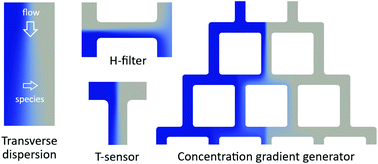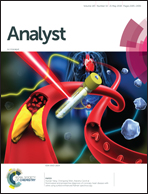Transverse solute dispersion in microfluidic paper-based analytical devices (μPADs)
Abstract
The transport of molecules and particles across adjacent flow streams is a key process in several operations implemented in microfluidic paper-based analytical devices (μPADs). Here, the transverse dispersion of analytes was quantitatively evaluated by theory and experiments. Different tests were carried out to independently measure the coefficients of both Brownian diffusion and mechanical dispersion under capillary-driven flow. The dispersion width was found to be independent of fluid velocity and analyte properties, and fully determined by the dispersivity coefficient, which is a characteristic of the paper microstructure. This information introduces a change of paradigm for the design of mixers, diluters, and concentration gradient generators on μPADs; therefore, efforts were made to rationalize these operations on paper. The research reveals that mixers and concentration gradient generators can be much more efficient than their counterparts made on conventional microchannels; in contrast, separators such as the H-filter need to be appropriately engineered on paper, because the working principle can be hindered by mechanical dispersion. The knowledge gained throughout this work would contribute to the design of μPADs with a new level of precision and control over the formation of localized concentration profiles.

- This article is part of the themed collection: Analyst Recent HOT articles


 Please wait while we load your content...
Please wait while we load your content...